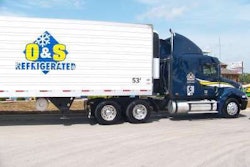The United States faces a huge gap in the coming years between the amount of freight that needs to be hauled and the amount that can be hauled given current constraints, and longer combination vehicles could help meet the challenge, a top executive of Volvo Trucks North America said today, May 8.
“The challenge is to safely deliver more freight, more efficiently in support of current and future demands,” said Scott Kress, the truck maker’s senior vice president of sales and marketing. Speaking in Boston at a seminar on climate change policy hosted by Volvo Group North America, Kress said that the trucking industry currently estimates the total amount of freight tonnage in the United States will increase 26 percent between 2006 and 2020, requiring a similar increase in the truck population in order to meet the challenge.
But a big increase in the number of trucks will burn more fuel, increase carbon-dioxide emissions, exacerbate congestion and increase accident risk exposure, Kress said, saying the time is right to rethink the current approach.
“Perhaps the best strategy is the ability to use longer combination vehicles,” said Kress, arguing that LCVs could reduce congestion, emissions, fuel consumption, transportation costs and dependence on foreign energy. And while infrastructure improvements would be needed, they likely would be marginal compared to those that would be needed to support the current approach in the decades to come, he said.
Contrary to the claims of trucking’s critics, larger trucks likely would increase safety due to the lower accident risk exposure from fewer trucks, Kress said. In any event, safety “was Volvo’s first core value and is the bedrock of the company










